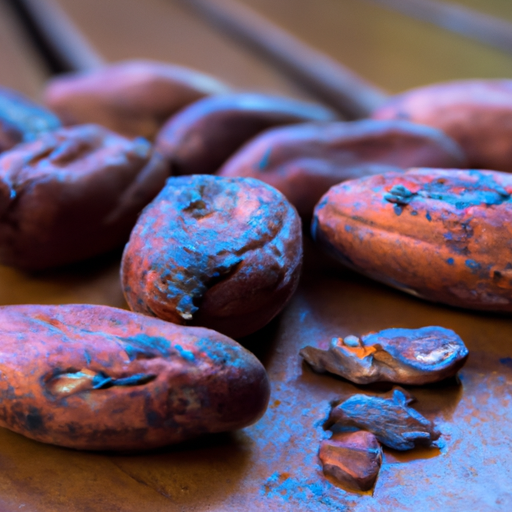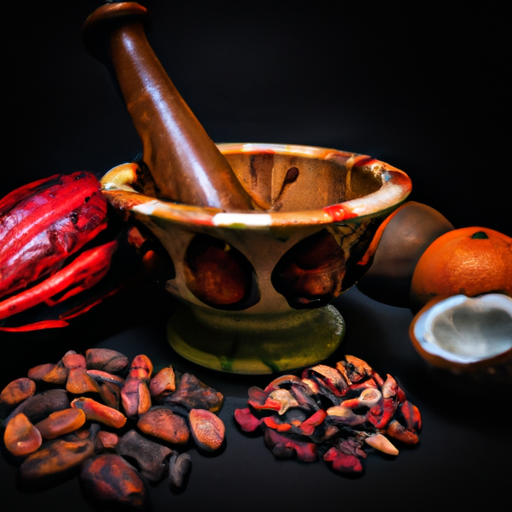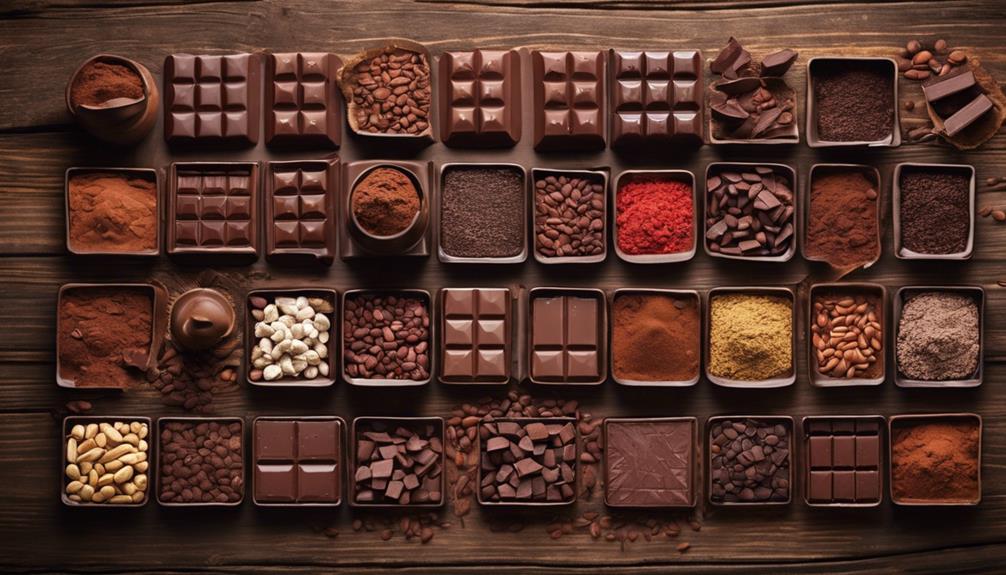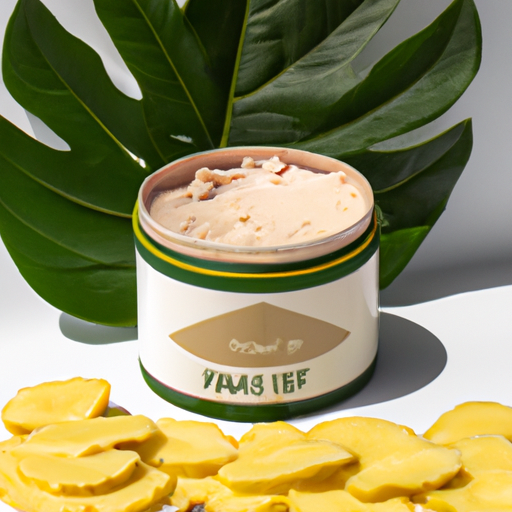You may be asking yourself, why would anyone choose to consume raw cacao beans? Allow me to explain, as there are numerous amazing health benefits contained within these small but mighty superfoods.
I know, it might seem a bit strange to munch on raw cacao beans, but trust me, it’s worth it. Raw cacao beans are bursting with antioxidants, magnesium, and other nutrients that can boost your mood, improve cardiovascular health, and even enhance cognitive function. Plus, they have a rich, intense flavor that can make any dish or snack taste amazing.
So, if you’re ready to embark on a delicious and nutritious journey, join me as I guide you through the process of eating raw cacao beans. From choosing the right beans to incorporating them into your favorite recipes, we’ll explore all the ways you can enjoy this superfood.
Get ready to indulge in the goodness of raw cacao beans like never before!
Key Takeaways
- Raw cacao beans can be used in nutritious smoothies, energy balls, face masks, and granola for their health benefits.
- Incorporating raw cacao beans in your skincare routine can help rejuvenate the skin and promote a glowing complexion.
- Raw cacao beans offer an energizing effect and can be enjoyed as a delicious snack.
- Adding raw cacao beans to breakfast granola can provide a crunchy texture and enhance the taste.
Understand the Health Benefits of Raw Cacao Beans
Raw cacao beans offer numerous health benefits that contribute to overall well-being. Ancient civilizations recognized the medicinal properties of cacao, and today we understand that they are a rich source of antioxidants and flavonoids, which protect cells and improve heart health. Understanding the different types of cacao beans is essential, as each variety has a unique flavor profile and nutrient composition. Opting for high-quality raw cacao beans maximizes their health benefits. Now, let’s explore how to choose these high-quality beans for consumption.
Choose High-Quality Raw Cacao Beans
Indulge in the exquisite bliss of savoring the essence of pure decadence by selecting only the finest, high-quality jewels of the cacao world. When it comes to enjoying raw cacao beans, choosing reputable brands and sourcing sustainable cacao is key.
Look for brands that prioritize fair trade practices and support local farmers. These brands often go the extra mile to ensure that their beans are of the highest quality, resulting in a more flavorful and nutrient-rich experience.
Additionally, consider the origin of the beans and opt for those sourced from regions known for producing exceptional cacao. By being mindful of these factors, you can guarantee that you are getting the best raw cacao beans available.
Now, let’s move on to the next step: roast or toast the beans for added flavor.
Roast or Toast the Beans for Added Flavor
To enhance the flavor of your exquisite cacao experience, consider roasting or toasting the beans, allowing their rich aromas to fill the air. Roasting the cacao beans brings out their natural flavors and adds depth to their taste. There are different roasting techniques you can try, such as oven roasting or using a hot pan. Experimenting with these methods will help you find the perfect roast level that suits your taste preferences. Additionally, you can explore flavor pairings to further enhance the taste of your roasted cacao beans. Some popular options include sea salt, cinnamon, chili powder, or even a hint of vanilla. These flavor pairings can complement the natural bitterness of the cacao beans and create a harmonious blend of flavors. In the next section, we will explore how to grind the beans into a fine powder.
Grind the Beans into a Fine Powder
Grinding the beans until they become a smooth and velvety powder unlocks a world of possibilities for creating decadent chocolate treats.
Not only does grinding raw cacao beans enhance the flavor, but it also provides numerous health benefits.
Raw cacao beans are rich in antioxidants, which help protect the body against free radicals and reduce inflammation. Additionally, they contain a high amount of magnesium, which is essential for maintaining a healthy heart and brain function.
By grinding the beans into a fine powder, you can easily incorporate this superfood into your daily diet. Add it to smoothies, oatmeal, or baked goods for a rich and intense chocolate flavor.
As we move into the next section on using raw cacao nibs as a topping or mix-in, you’ll discover even more ways to enjoy the benefits of these delicious beans.
Use Raw Cacao Nibs as a Topping or Mix-In
Get creative with your chocolate treats by sprinkling raw cacao nibs on top or mixing them into your favorite dishes. Raw cacao nibs make a delicious and nutritious addition to salads, adding a satisfying crunch and a rich chocolate flavor.
Simply sprinkle a handful of raw cacao nibs over your salad to elevate its taste and texture. You can also incorporate raw cacao nibs into homemade granola for a delightful twist. The nibs provide a natural sweetness and a hint of bitterness that pairs perfectly with the other ingredients.
Once you’ve explored these savory options, it’s time to move on to the sweet side. In the next section, I’ll show you how to make a delicious raw cacao smoothie that will satisfy your chocolate cravings.
Make a Delicious Raw Cacao Smoothie
Indulge in a refreshing and guilt-free treat by blending together a delicious smoothie using raw cacao nibs. These little powerhouses are packed with antioxidants and fiber, making them a perfect addition to support your overall health.
To make a raw cacao smoothie, start by combining a ripe banana, a handful of spinach, a cup of almond milk, and a tablespoon of raw cacao nibs in a blender. Blend until smooth and creamy.
For variations, you can add a scoop of protein powder, a tablespoon of almond butter, or a handful of frozen berries. The benefits of adding raw cacao to your diet include improved mood, increased energy, and enhanced cognitive function.
So go ahead and whip up this nutritious and delicious smoothie to start your day off right!
Now, let’s move on to creating raw cacao energy balls or bars.
Create Raw Cacao Energy Balls or Bars
To continue our journey with raw cacao, let’s dive into another delicious treat you can create with these magnificent beans: raw cacao energy balls or bars. These bite-sized delights are not only packed with the rich, chocolatey flavor of raw cacao, but they also provide a powerful energy boost to keep you going throughout the day.
To make raw cacao energy bites or protein bars, start by blending together dates, nuts, and raw cacao powder in a food processor. Shape the mixture into small balls or press it into a baking dish to form bars. Refrigerate them for a few hours to set, and voila! You have a nutritious and satisfying snack ready to enjoy.
These energy bites or bars are a perfect on-the-go option for when you need a quick pick-me-up. They are loaded with antioxidants, fiber, and essential minerals like magnesium and iron. Plus, they are naturally sweetened by the dates, making them a healthier alternative to store-bought snacks.
Now, let’s move on to the next exciting topic: incorporating raw cacao into baked goods and desserts.
Incorporate Raw Cacao into Baked Goods and Desserts
Let’s explore how we can add a touch of raw cacao goodness to our favorite baked treats and desserts!
Baking with raw cacao is a wonderful way to incorporate its rich flavor and health benefits into our sweet creations. Raw cacao can be used in various dessert recipes, such as brownies, cakes, cookies, and even ice cream.
When adding raw cacao to baked goods, it’s important to substitute it for cocoa powder or chocolate in the recipe. Raw cacao has a more intense flavor, so a little goes a long way.
Not only does baking with raw cacao enhance the taste of our desserts, but it also provides us with antioxidants, minerals, and mood-boosting properties.
So, let’s experiment with raw cacao bean recipes and enjoy the indulgence it brings to our homemade treats!
Experiment with Raw Cacao Bean Recipes and Enjoy!
Why not try out some fun and delicious recipes that incorporate the incredible goodness of raw cacao beans? Not only are they a healthy alternative to processed chocolate, but raw cacao beans also offer numerous benefits for your skin.
Here are four ways you can experiment with raw cacao bean recipes and enjoy the benefits:
-
Raw cacao bean smoothie: Blend raw cacao beans with your favorite fruits and almond milk for a nutritious and energizing smoothie.
-
Raw cacao bean energy balls: Mix raw cacao beans with dates, nuts, and shredded coconut to create tasty and nutritious energy balls.
-
Raw cacao bean face mask: Combine ground raw cacao beans with honey and yogurt to make a rejuvenating face mask that will leave your skin glowing.
-
Raw cacao bean granola: Add raw cacao beans to your homemade granola for a crunchy and nutritious breakfast option.
By incorporating raw cacao beans into your recipes, you can enjoy their delicious taste while reaping the benefits for your skin with a raw cacao bean skincare routine.
Frequently Asked Questions
How long do raw cacao beans last before they expire?
Raw cacao beans have a shelf life of 1-2 years if stored properly. To ensure freshness, store them in an airtight container in a cool, dark place. Avoid exposure to heat, moisture, or direct sunlight.
Can raw cacao beans be consumed by people with nut allergies?
Raw cacao beans can be safely consumed by people with nut allergies. They are a versatile ingredient that can be used in various raw cacao bean recipes, offering numerous health benefits.
Are there any potential side effects or risks associated with consuming raw cacao beans?
There are potential side effects associated with consuming raw cacao beans, such as digestive issues, migraines, and allergic reactions. It’s important to consume them in moderation and stick to the recommended serving size to avoid these risks. However, raw cacao beans also offer potential health benefits.
Can raw cacao beans be used as a substitute for cocoa powder in recipes?
Yes, raw cacao beans can be used as a healthier substitute for cocoa powder in recipes. They provide the same rich chocolate flavor and are packed with antioxidants and minerals, offering numerous health benefits.
How do raw cacao beans compare to regular chocolate in terms of taste and texture?
When comparing the taste and texture of raw cacao beans to regular chocolate, there is a noticeable difference. Raw cacao beans have a more intense and bitter taste, with a slightly grainy texture. However, they offer numerous nutritional benefits such as being rich in antioxidants and minerals.
Are There Any Differences Between Raw Cacao Beans and Raw Organic Cacao Beans in Terms of Consumption?
When it comes to eating raw cacao beans, organic options are always the better choice. Raw organic cacao beans are grown without synthetic chemicals or pesticides, making them healthier for consumption. They are also richer in antioxidants and nutrients compared to non-organic cacao beans.
Conclusion
In conclusion, raw cacao beans are a powerhouse of health benefits. By incorporating them into your diet, you can enjoy the rich flavor and reap the nutritional rewards.
From adding them to smoothies and baked goods to creating energy balls and bars, the possibilities are endless. So, why not indulge in the deliciousness of raw cacao beans?
Get creative, experiment with recipes, and savor the goodness. Your taste buds and body will thank you for it!










